Robot Lawn Mower Without Perimeter Wire
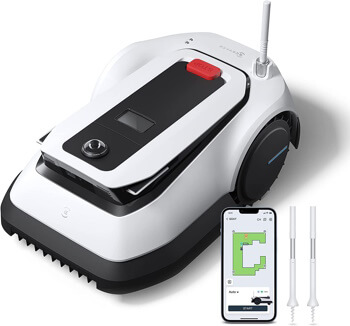
Although there are robotic lawn mowers available in the market without boundary wires, this type of navigation has been associated with both advantages and disadvantages, which is why most lawn mower manufacturers prefer the use of a boundary wire or search cable.
However, this is changing rapidly, as both startups and established manufacturers are making significant progress in developing smart models that don’t require wire installation and no longer need a boundary wire for operation. In this article, we’ll cover all the models that don’t need a perimeter wire or boundary wire – simply place them on the lawn and let them mow without having to painstakingly lay a wire beforehand.
The most common perimeter wire free robotic lawn mower used to be the Ambrogio L60 Elite by Zucchetti, as seen in the picture below. The manufacturer also offers other models that don’t require wire installation and is well-known for this feature. Some robotic mowers from Wiper, such as the Wiper Blitz X4 and its successor, the Tech Line Blitz S6, are also known for not needing any installation or boundary wire. You can find an overview of currently available wire-free robotic mowers in the next section. However, the selection of these older generation models is limited. We’re currently awaiting a change and looking forward to seeing the next-generation robot mowers.
» Find the best robot lawn mower*
Which robotic mowers don’t require boundary wires?
One provider that has long been a leader in the field of robotic mowers without a boundary wire is the Italian manufacturer Zucchetti. The Ambrogio Robot models do not require any installation or wire laying and can be put into operation directly. In addition to the Ambrogio Robot models, the robotic mower shown in the picture is also common in this area.
Simply place it on the lawn and press »Start«. The Wiper Blitz X4 mows within clearly defined lawn edges, even without a perimeter wire. Some models listed below also allow app control via Bluetooth. In the following, we have selected and listed the most popular robotic mowers without a perimeter wire so far. Then we will discuss the new, intelligent generation of robotic mowers that is currently emerging.
Comparison of Existing Robotic Lawn Mowers without Perimeter Wire 2024
Here is an overview of all old models without a perimeter wire 2024 – we will continuously update the list as new models become available.
The best roboticlawn mowers without a perimeter wire 2024:
- Zucchetti Ambrogio L60 Elite (up to 200 sqm)
- Zucchetti Ambrogio L60 Elite S+ (up to 400 sqm)
- Zucchetti Ambrogio Twenty ZR (up to 1.000 sqm)
- Zucchetti Ambrogio L400I BASIC (up to 10.000 sqm)
- Zucchetti Ambrogio L400I DELUXE (up to 20.000 sqm)
- Zucchetti TECHline Blitz S6 (up to 400 sqm)
- Zucchetti Wiper Blitz X4 W-BX4 (up to 400 sqm)
- Zucchetti Wiper Blitz 2.0 (up to 400 sqm)
- Zucchetti Wiper Blitz X2 W-BX2 (up to 200 sqm)
- Zucchetti Wiper Blitz 1.0 (up to 200 sqm)
- Husqvarna Automower 550 EPOS (up to 5000 sqm)
- Marotronics Alfred (up to 1000 sqm)
In addition to these older generation models, the new generation of smart robotic lawn mowers is currently entering the market, distinguished primarily by easy installation and operation without a perimeter wire.
Next generation: Are there any new perimeter wire free robotic mowers?
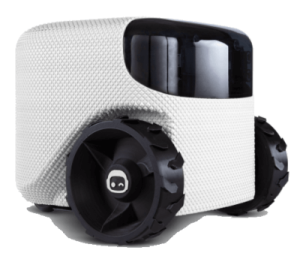
One example is the Willow mower by EEVE (formerly known as Toadi), which uses cameras and artificial intelligence to navigate the lawn instead of perimeter wires, and is designed to reliably detect obstacles. Additionally, the iRobot Terra t7 has been announced as a new robotic mower without perimeter wires, utilizing small radio masts on the lawn for navigation and orientation. Both models were expected to be available for the 2021 gardening season, but there may have been delays. On the other hand, well-known manufacturer Segway announced and made available the Navimow relatively quickly.
Now, established manufacturers like Worx and Husqvarna are also entering this market. Worx has announced the Landroid Vision series, and Husqvarna is launching the Automower NERA series. We will delve into these model series in more detail in the next section. Likewise, two well-known manufacturers, Stiga and Einhell, are entering this market and are offering intelligent models, some of which feature cameras for obstacle detection. So far, we can unequivocally recommend the Mammotion Luba, which we were able to thoroughly review.
Apart from the aforementioned manufacturers, Zucchetti with its Wiper model, which recently released the successor model TECH Line S6, and Ambrogio with its L60 models, are currently the only ones in the market. Interestingly, both brands are actually backed by Zucchetti, a manufacturer that has specialized in wire-free devices for years. We will certainly update our information with any new models that become available.
The next generation of robot lawn mowers with no wire:
- Segway Navimow i105E / i108E (available)
- Segway Navimow H (currently unavailable)
- Mammotion Luba 2* (available)
- Mammotion Yuka 3D Vision* (Jun 2024)
- Ecovacs Goat G1 (currently unavailable)
- EcoFlow Blade (currently unavailable)
- EEVE Willow (pre-order)
- Ecovacs Goat GX-600 (available)
- Dreametech Dreame A1 (available)
- Airseekers Tron (Kickstarter)
- LFI Novabot (available)
- RoboUp Rhino 1 (April 2024)
- Joybee K2 (from April 2024)
- Aiper Horizon U1 (from Q3 2024)
- Hookii Neomow X (from 2024)
- Eeve Willow X (from 2025)
- RoboUp TM01 (currently unavailable)
- Oasa R1 (from August 2024)
Mammotion Luba(currently unavailable)- iRobot Terra t7 (availability unknown)
- Heisenberg LawnMeister H1 (copyright dispute)
- Kowoll Kolmower M28E (crowdfunding suspended)
- Lawna (crowdfunding suspended)
- Husqvarna Automower NERA (available)
- Worx Landroid Vision (spring 2023)
- Einhell Freelexo Cam (partly available)
- Stiga A-series (partly available)
- Kress Mission RTK-series (partly available)
- Zucchetti Ambrogio 4.36 Elite RTK (partly available)
- Zucchetti TECHline Next Tech LX2 ZR (partly available)
Segway Navimow
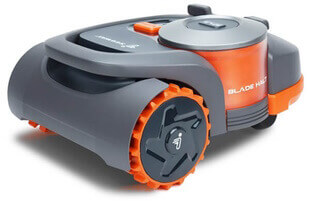
This is complemented with the usual sensor technology such as ultrasound or, optionally, a camera system with AI technology. However, without the optional “VisionFence” camera, the Navimow is only suitable for certain conditions in the garden and may not be suitable for everyone. Overall, the Navimow is one of the most advanced models on the market. In initial Navimow reviews, the model has proven itself. The four Navimow models are now available for purchase.
» View Segway Navimow
Mammotion Luba
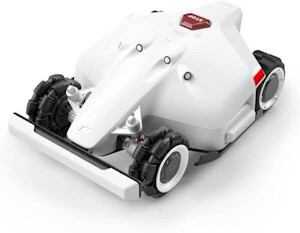
With the Mammotion Luba, you can set multiple mowing zones, with the number of supported zones varying depending on the version. The cutting height falls within the usual range, but the cutting width is significantly wider compared to other models, thanks to the use of two cutting discs underneath the robot mower. We’ve had a chance to take a closer look at the Mammotion Luba and have created a detailed review. At that time, we could describe the Luba as one of the most advanced wireless robotic lawn mowers. The successor model, Luba 2 AWD, replaces this model.
Ecovacs Goat G1
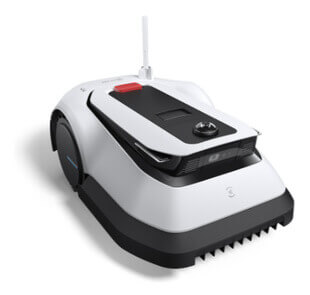
In addition, the Goat G1 serves as a watchdog in the garden, providing increased security. It regularly visits predefined surveillance points and offers various monitoring options. Ecovacs also places importance on data privacy, which has been confirmed f.e. by german “TÜV Rheinland”.
» View Ecovacs Goat G1
EcoFlow Blade
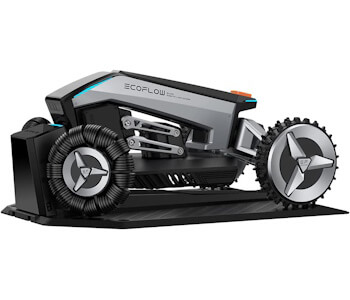
In addition to theft protection and a rain sensor, another highlight is the version with an integrated lawn sweeping attachment. With this attachment, the EcoFlow Blade can clear your lawn of leaves and debris, complementing its lawn care capabilities. Furthermore, this wire-free robot lawn mower is equipped with large omnidirectional tires, making it suitable for uneven terrain or inclines of up to 50%, allowing it to navigate challenging landscapes.
» View EcoFlow Blade
Airseekers Tron
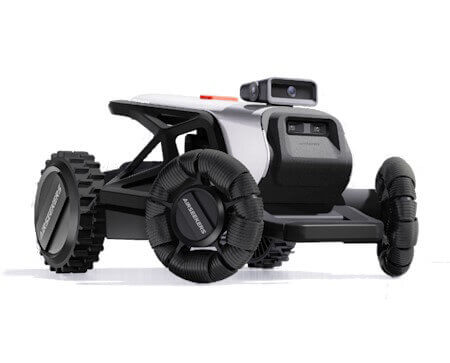
The omnidirectional front wheels, reminiscent of the EcoFlow Blade, combined with all-wheel drive, enhance the Tron’s maneuverability. With these features, the Tron can handle slopes of up to 65% and mow lawns up to a maximum of 1.5 ac (6000 m²). Integration into smart home systems is possible via MQTT and a local API. The Kickstarter campaign for the Airseekers Tron will begin in April, with the official release expected in June 2024. Prices have not been disclosed yet.
EEVE Willow
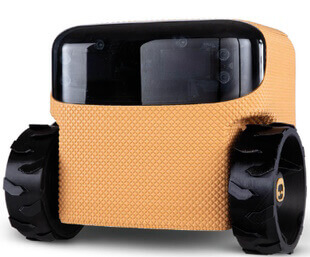
Furthermore, the 4K camera with infrared night vision allows the Willow robotic mower to be used as a smart surveillance system. But that’s not all: the Willow is also designed to sweep your terrace, transport goods, play games, or take photos, for example, at events in your garden. New functions can be added without programming skills, and new tools can be produced using 3D printing. EEVE refers to it as a “robot revolution” for good reason. We are eagerly anticipating the first tests once the Willow becomes available. Currently, the Willow, which is planned in two versions, can only be reserved through a waitlist. The first deliveries are now scheduled for February 2024.
Heisenberg LawnMeister H1
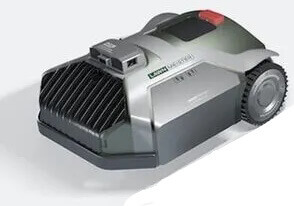
One of the key features of the LawnMeister is its modular design, which will allow for easy addition of extra functions in the future. These additional functions may include precise trimming of lawn edges, blowing leaves, or spraying a fertilizer solution. The robot is also planned to have a brush mechanism to remove grass clippings from the lawn after mowing is done. The LawnMeister is expected to be available in two different versions with varying battery sizes. We will keep you updated and update the post once the model becomes available.
Well-established manufacturers are following suit: Cordless models from popular brands
But the well-known manufacturers and brands of robotic lawnmowers with years of experience do not want to leave the field entirely to startups and are catching up. Already, two manufacturers have announced models that operate without a perimeter wire. Among them is the market leader Husqvarna, which already offered cordless robotic mowers in the professional segment and now plans to introduce the Automower NERA series. And Worx, known for its affordable and popular mowers, is also following suit and plans to offer the Landroid Vision series starting from 2023. We have taken a closer look at these two new model lines.
Worx Landroid Vision
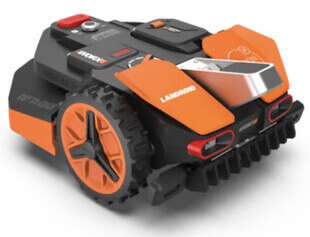
Worx has departed from the premise of explicitly avoiding mowing at night to protect nocturnal animals with these models. The camera technology, including a small LED spotlight for nighttime operation, can detect and avoid animals and humans in advance. In addition, typical features such as edge mowing and multi-zone capability with support for RFID tags are included. The four models planned are Landroid Vision M600 (WR206E), M800 (WR208E), L1300 (WR213E), and L1600 (WR216L), designed for gardens ranging from 600 to 1,600 square meters. They are expected to be available in spring 2023.
Husqvarna Automower NERA
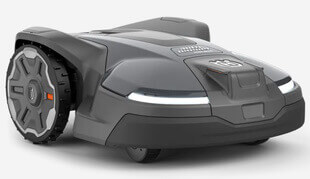
The first cordless robotic lawn mower models, Husqvarna Automower 320 NERA, Automower 430X NERA, and Automower 450X NERA, are scheduled to be released in time for the 2023 gardening season.
Einhell Freelexo Cam
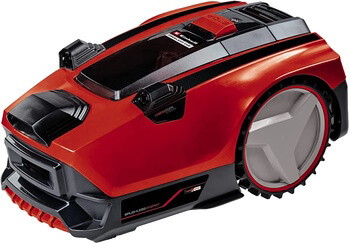
However, it is not as easy to modify the mowing area afterward, as the lawn mower first needs to explore the boundaries on its own. However, a temporary exclusion in the mowing area can be achieved with an included magnetic strip. The Einhell Freelexo Cam is available in two versions (Freelexo Cam 500 and Freelexo Cam 350) and is suitable for areas of up to 500 m² or 350 m², respectively.
Stiga A-series
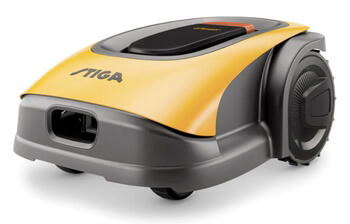
For navigation, a specially developed, rather complex technology (AGS) is used, which relies on GPS and RTK, a technology for better GPS positioning, and intelligently plans mowing times depending on signal availability. This ensures that the lawn mower can mow continuously when the GPS signal is strongest. In addition, a 4G mobile connection is established to ensure communication with the Stiga cloud.
With this technical basis, the Stiga autonomous robotic mower maps out the garden and mows in a systematic pattern that constantly changes direction. The battery has a sufficiently high capacity so that the entire garden can be processed with just two mowing cycles, and mowing in the evening or at night is not necessary. This protects the wildlife and the garden can be used without hesitation during the day.
Robotic mowers with a perimeter as an alternative
Robotic lawn mowers with a perimeter wire can be considered as an alternative. Although the situation is currently changing, models that operate without an induction loop or boundary wire are still relatively uncommon on the market. Therefore, we would generally recommend taking a look at robot mowers with a perimeter wire. Popular and proven models are available from reputable brands such as Bosch, Gardena, or Worx. You can find new models from these well-known manufacturers here. In addition, the predecessor of the following model was the winner in the robot mower test conducted by “Stiftung Warentest” and falls within a similar price range:
How does the navigation work for a lawn mower robot without perimeter wire?
The navigation of robotic lawnmowers without a boundary wire works by the mower autonomously distinguishing the lawn from the rest of the garden. This is typically done using lawn sensors that can detect, for example, the touch of grass blades, signaling to the mower that it is still within the mowing area. For example, the Ambrogio robot mower uses a ZGS sensor (Zucchetti Grass and Gap Sensor) that can detect not only the lawn but also changes in ground level, such as slopes, to navigate on the lawn surface.
While it may sound simple in theory, it can be more challenging in practice. One difficulty is that robot mowers without a perimeter wire may have difficulty distinguishing between lawns and other areas, such as flower beds. Therefore, it is important to clearly define the boundaries of the lawn area from other areas in the garden when using these models.
Ideally, the garden should consist only of the lawn and be clearly delineated by tall stones, paths, or fences. Some models also offer app-based control via Bluetooth. Generally, paths should be wider than 25 cm and lawn edges, depending on the manufacturer, should be about 10 cm deep to be reliably detected. There should be more than 10 cm of clear lawn space in front of a sloping ground; otherwise, it is advisable to place an artificial barrier. The detection of gravel or bark mulch as a clear lawn surface may not always be reliable in current models.
On the other hand, the new generation of intelligent robot lawn mowers without perimeter wires uses advanced camera technology combined with artificial intelligence and often ultrasound sensors for improved obstacle and hazard detection. The navigation of these models relies on a combination of different wireless technologies, such as GPS, Wi-Fi, mobile networks, or proprietary technologies, which provide sufficient accuracy to navigate through the garden or lawn area without a perimeter wire.
Not sure which robot mower to choose yet? Here are the top models for 2024:
Find your robotic mower now!*Advantages of Robot Mowers without Perimeter Wire (Wireless)
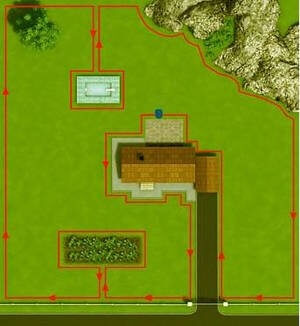
Since there is no need to lay a search cable for the route to the charging station, a robot mower can be put into operation much faster. In some cases, the robot mower just needs to be placed on the lawn and can start working. This sounds simple and tempting so far.
Another advantage of wireless robot mowers is that the perimeter wire never needs to be relocated. If there are changes in the lawn area – for example, if an area is covered with gravel or concrete – then the perimeter wire needs to be painstakingly relocated. This offers the essential advantage, especially in spring, that areas can be easily excluded from mowing to provide new food sources for insects after the long winter days and contribute to biodiversity. However, this function is only available in newer generation models.
Similarly, if a different model is purchased, there is no need for reinstallation. Often, models from the same manufacturer can use the same cable, but with a different manufacturer, a new cable may need to be laid. For example, a Husqvarna perimeter wire usually cannot be used for models from other manufacturers, but it can be used for other Automower models.
In addition, there is the risk of cable breakage, where the damaged spot is often difficult to locate, and therefore the entire cable needs to be replaced.
The advantages of robot mowers without perimeter wire:
- significant time savings during installation
- flexibility for changes in the garden
- no possibility of cable breakage
- ability to handle steeper inclines in most cases
Disadvantages of a perimeter wire free robot lawn mower
Perimeter wire free robot lawn mowers, however, also came with some downsides. In the past, It could be particularly challenging when dealing with flower beds or similar areas that resemble grass and should not be mowed. Older generations of robot mowers had their fair share of difficulties with this issue and required clear boundaries for the lawn areas.
Flower beds are often not properly detected by older models of robot mowers, potentially undoing months of work. However, this can be prevented by using a small stone edge. Additionally, if there is no clear boundary between one’s own property and the neighbor’s property, a wireless robot mower may inadvertently cross over to the neighbor’s lawn. As an alternative to a model without perimeter wire, a professional on-site installation could be considered to avoid this issue with a wired model and save on the effort of installation.
Disadvantages of robot mowers without perimeter wire:
- earlier models may require better delineation around flower beds and other areas.
- older generation models may have lower coverage capacity.
- some models, such as Ambrogio, may not have automatic charging capabilities.
- they tend to be more expensive compared to wired models.
How does orientation work without a guide wire?
The guide wire serves as a reference for the robot mower to find its charging station. Robot mowers without a perimeter wire rely on alternative means of orientation. Manufacturers of these models typically equip the robot mowers with lawn sensors, GPS, or a compass. This helps the robot mower to independently locate its charging station by knowing the direction it is heading. The usual method of following the guide wire is not required. Other concepts may use cameras or wireless systems to allow for operation without a perimeter wire or a search wire.
Is my garden suitable for robot mowers without perimeter wire?
To determine if your garden is suitable for using a robot mower without perimeter wire, please consider the following criteria, keeping in mind that these apply specifically to older generation models:
- The lawn has clear boundaries defined by fences or stones.
- Water features and flower beds are clearly delineated.
- The garden has a simple layout without many obstacles.
- The lawn area is less than 400 sqm.
If all these criteria are met, you can generally use a wireless robot mower without perimeter wire. However, with newer generation models, these criteria may not be necessary as they are designed to handle complex gardens without clear boundaries.
FAQ: Frequently Asked Questions about robot lawn mowers with no wire
Conclusion: Robot mowers without perimeter wire (without installation)
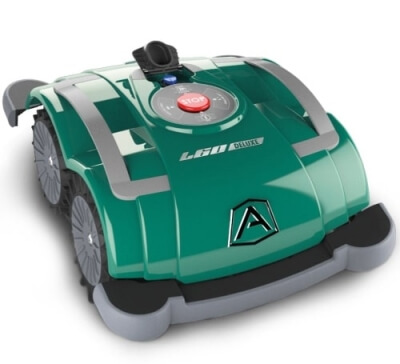
Nevertheless, these models are in use and can navigate through heavily overgrown gardens without the need for wire installation. So, for those who want to avoid the work of wire installation and have a smaller garden, it may be worth considering these robot mowers without perimeter wire. These models are especially suitable when the robot mower needs to operate on different, separate lawn areas where wire installation is not feasible. We are not aware of any independent robot mower tests specifically for models without perimeter wire.
The new, intelligent generation of robot mowers that do not require installation is currently disrupting this market and offering customers a wide range of additional features and smart technology. This development has just begun and will undoubtedly significantly and sustainably change the entire market of robot mowers in the coming years. Increased safety, particularly in accidents involving animals, and easier adjustment of mowing areas, such as preserving flower meadows for greater biodiversity, speak for themselves. We are excited to see what the future holds and will keep you updated!
Video: Wire-Free Installation Robot Lawn Mower – Worx Landroid Vision
Images: © Zucchetti, Segway, Mammotion, Ecovacs, Willow, iRobot, Heisenberg, Worx, Husqvarna, Stiga, Einhell


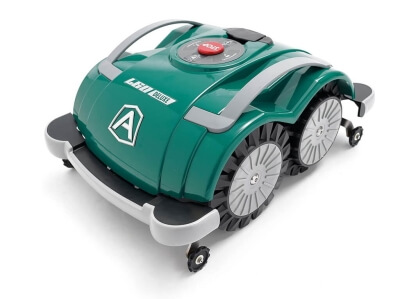
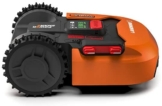

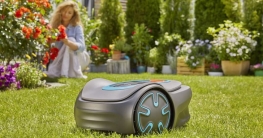
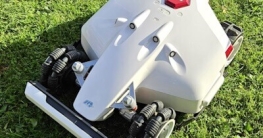

No Comments found